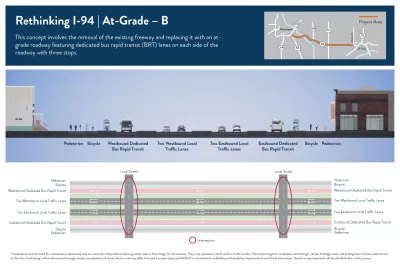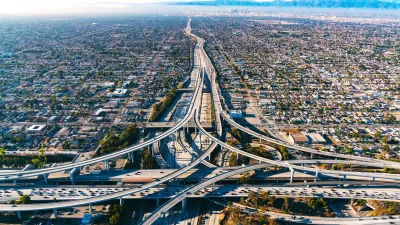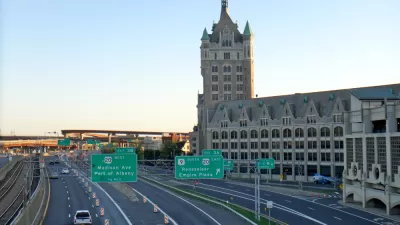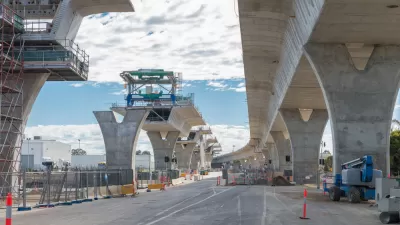Two new proposals for replacing the freeway with at-grade segments offer new visions for the future of downtown Minneapolis.

“In mid-July, the Minnesota Department of Transportation rolled out a slate of 10 design alternatives for the future of a 7.5-mile stretch of Interstate 94 that runs between Minneapolis and St. Paul, including two options that would bring the highway to grade and convert it into a boulevard, which won the most community support in early public meetings.” Writing in Streetsblog, Kea Wilson explains the controversy around the project.
The new proposals to tear down the road contradict previous assessments that removal wouldn’t be possible. “For local non-profit Our Streets Minneapolis, though, thoroughly reimagining I-94 isn't just the best option on the table — it's the only option if the Land of 10,000 Lakes truly wants to reckon with the racist legacy of its transportation choices.”
Our Streets wants MnDOT to go even further and adopt “a more ambitious concept they're calling Twin Cities Boulevard, which would incorporate subways, extend a major greenway, and expand the project area to include other adjacent highways that the group says would be ripe for repurposing if I-94 were removed.”
Other groups support the proposed “Rondo Community Land Bridge, a 16-acre cap that would leave the highway intact, but establish a cultural enterprise district aimed at restoring intergenerational wealth to African-American Minnesotans atop it.” This proposal received a $2 million Reconnecting Communities grant for research and planning.
“One thing both advocacy groups can agree on, though, is that like urban highways in virtually every city in America, I-94 has had a catastrophic impact on the Twin Cities' most marginalized — and its next chapter must be a catalyst for change.”
FULL STORY: Twin Cities Advocates Split Over What’s Possible for Their Downtown Highway

Alabama: Trump Terminates Settlements for Black Communities Harmed By Raw Sewage
Trump deemed the landmark civil rights agreement “illegal DEI and environmental justice policy.”

Planetizen Federal Action Tracker
A weekly monitor of how Trump’s orders and actions are impacting planners and planning in America.

Why Should We Subsidize Public Transportation?
Many public transit agencies face financial stress due to rising costs, declining fare revenue, and declining subsidies. Transit advocates must provide a strong business case for increasing public transit funding.

Understanding Road Diets
An explainer from Momentum highlights the advantages of reducing vehicle lanes in favor of more bike, transit, and pedestrian infrastructure.

New California Law Regulates Warehouse Pollution
A new law tightens building and emissions regulations for large distribution warehouses to mitigate air pollution and traffic in surrounding communities.

Phoenix Announces Opening Date for Light Rail Extension
The South Central extension will connect South Phoenix to downtown and other major hubs starting on June 7.
Urban Design for Planners 1: Software Tools
This six-course series explores essential urban design concepts using open source software and equips planners with the tools they need to participate fully in the urban design process.
Planning for Universal Design
Learn the tools for implementing Universal Design in planning regulations.
Caltrans
Smith Gee Studio
Institute for Housing and Urban Development Studies (IHS)
City of Grandview
Harvard GSD Executive Education
Toledo-Lucas County Plan Commissions
Salt Lake City
NYU Wagner Graduate School of Public Service





























